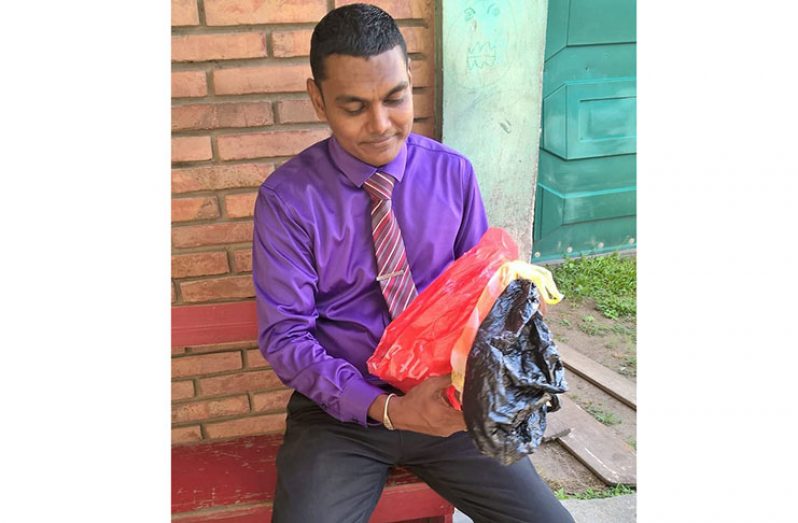Not a culture, but a behavioural problem – Solid Waste Director
WHILE authorities continue to complain that flooding in Georgetown is largely due to littering by citizens, such as someone throwing a plastic bottle out of a moving vehicle into a drain or canal, some Guyanese are refusing to change their behaviour.
It has often been said that these very litter bugs would not dare engage in such repugnant behaviour once overseas. But what exactly makes them feel comfortable, or emboldens them, to throw their garbage just about anywhere here in Guyana?
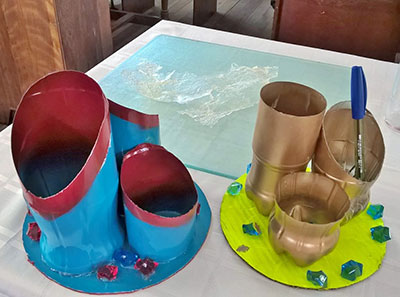
Could it be for one that authorities are lax; not strict enough? The Mayor and City Council (M&CC), for instance, launched an anti-littering campaign not too long ago and even passed by-laws seeking a tremendous increase in the littering fines.
Why then are more persons not being charged and placed before the courts? Authorities have answered that the City Constabulary Department lacks the manpower to be able to effectively enforce such by-laws.
Chief Constable Andrew Foo has long been crying that his department is short of over one hundred officers; and on one occasion, he even offered the explanation that it is difficult to recruit persons to work in the Constabulary because of low salaries and other limitations.
With authorities unable to be as aggressive as they ought to be, and with citizens refusing to change their behaviour, what’s next for Guyana in this department?
Director of the Solid Waste Management Department of the M&CC, Mr. Walter Narine, during a recent interview with the Pepperpot Magazine , has pointed out that a few plastic bags can cause as much damage as to flood an entire neighbourhood, once they block vital parts of a koker that are responsible for the free flow of water.
“Plastic is a tremendous problem to the environment. One plastic bag that is non-biodegradable takes up to a thousand years to disintegrate. They are so easily accessible by consumers; anywhere you go, you come home with plastic bags and those bags inadvertently end up into the waterways,” Narine offered during the interview at his Princes Street office.
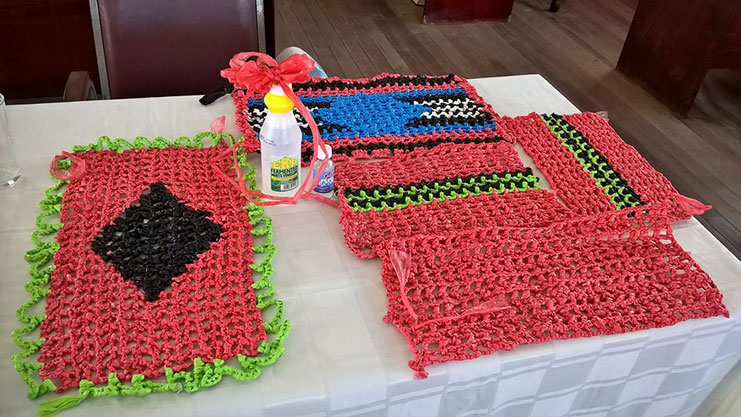
Once plastic bottles get into the city’s waterways and are mixed with the debris in there, the water often becomes stagnant, resulting in great unsightliness. In fact, Narine noted that a buildup of such bottles can be seen at any given time at the various koker doors.
In order to limit the amount of plastic bags and bottles being used locally, Narine is encouraging citizens to walk with their own shopping bags and to have reusable water bottles so as to avoid buying water while on the go. The problem is compounded by the use of plastic spoons, forks and straws.
“Look at the cheapness of making these materials as against the potential damages to the environment. It doesn’t make sense for us to continue along this path because of how rapidly we’re destroying the environment. I don’t think we have a culture problem in Guyana; we have a behavioural problem and we need to change it,” Narine stated.
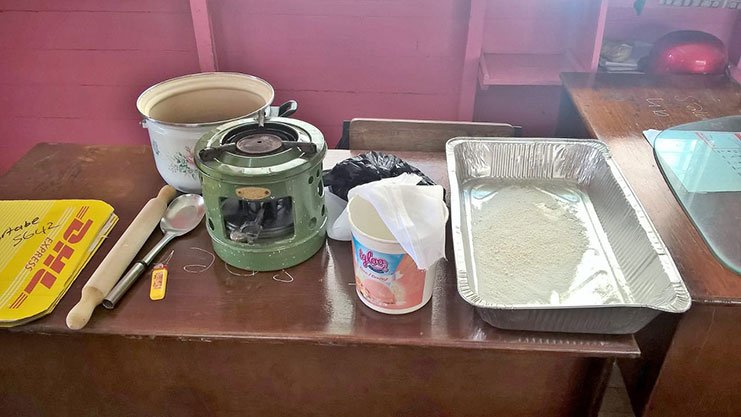
PLASTIC BAGS FROM GROUND PROVISIONS
Narine was keen to point out that the M&CC’s Solid Waste Department is not only about the collection and disposal of waste. “It’s about finding alternatives for the waste that we throw out. They’re all value-added products. Everything that we throw out daily, we can find value for them if you have the appropriate technology and know-how.”
The department is on a mission to show the possibilities of converting the different facets of waste into value-added commodities.
In the past, the department has used plastic to make placemats or rugs with them and has also used plastic bottles to make brooms, administrative holders for pens and paperclips, etc.
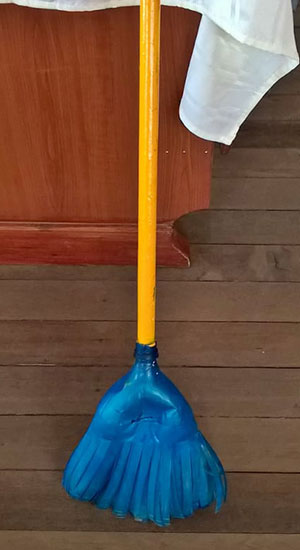
“One that I am very excited about…because of the imminent ban that will be on single-use plastic items in Guyana, we anticipate that the citizens of Georgetown will ask about an alternative once the plastic is banned. I would not subscribe to paper bags being the alternative because if we’re talking about the environment, paper comes from trees and you’re ultimately contributing to deforestation. So during some research, I saw this technology being used in various parts of the world where they took cassava and made plastic bags out of it.”
With an abundance of cassava and other ground provisions available in Guyana, Narine said come 2019, he is ready to take this proposal before the City Council so that a project like this can move forward right here.
“Any ground provision that has the requisite amount of starch in it can be used. You’ll have to extract the starch from the cassava, combine it with water and glycerin and vinegar or table salt. Glycerine acts as a plasticiser and makes the material flexible and vinegar or salt makes the starch dissolve easily into the liquid because it has electrically charged irons in it. Once you have that and stir to have a homogeneous mixture, you just have to apply heat for about 30 seconds to one minute, and you will see the formation of plastic.”
Taking it a step further, Narine will be lobbying for an extruder machine to be purchased so that within a single day, thousands of plastic bags, made from cassava, can be produced.
“The idea behind this is to find an alternative to plastic bags, so once you have the plastic, you have to invest in an extruder. It passes the plastic mixture under heat and extrudes it into a very thin layer and that is plastic. You can cut that thin layer to whatever size of plastic bags you want. These bags are very durable and they are very economically and environmentally friendly bags,” Narine expressed.
Once these ‘cassava bags’ get into the waterways, they will disintegrate within 24 hours. “That will solve our plastic pollution problem and the sea animals would consume these bags, mistaking them for jellyfish, they would not die. It would disintegrate into their system and the starch will have no effect on them,” he observed.
Another project that Narine will be looking at for 2019 is the use of a closed system incinerator. “Not like Old Smokey where all the fumes came into the atmosphere. This is a closed system where you burn the garbage, the fumes are trapped and passed over a coolant system and they condense into liquid. That liquid can be collected into containers and buried.”



.jpg)



